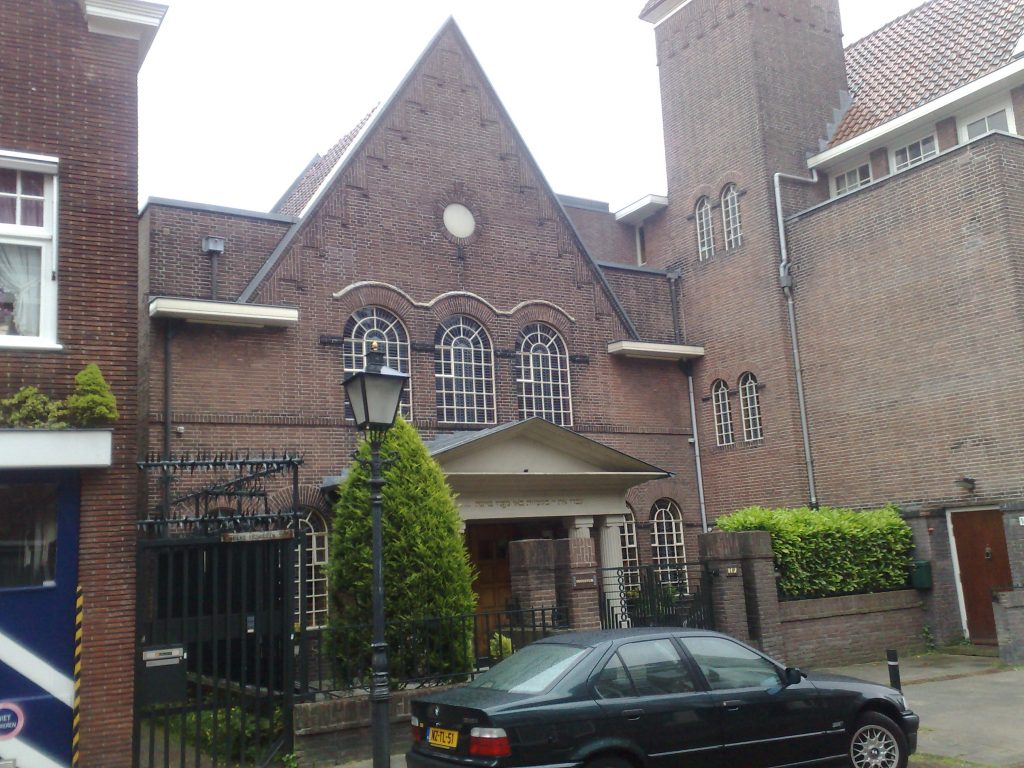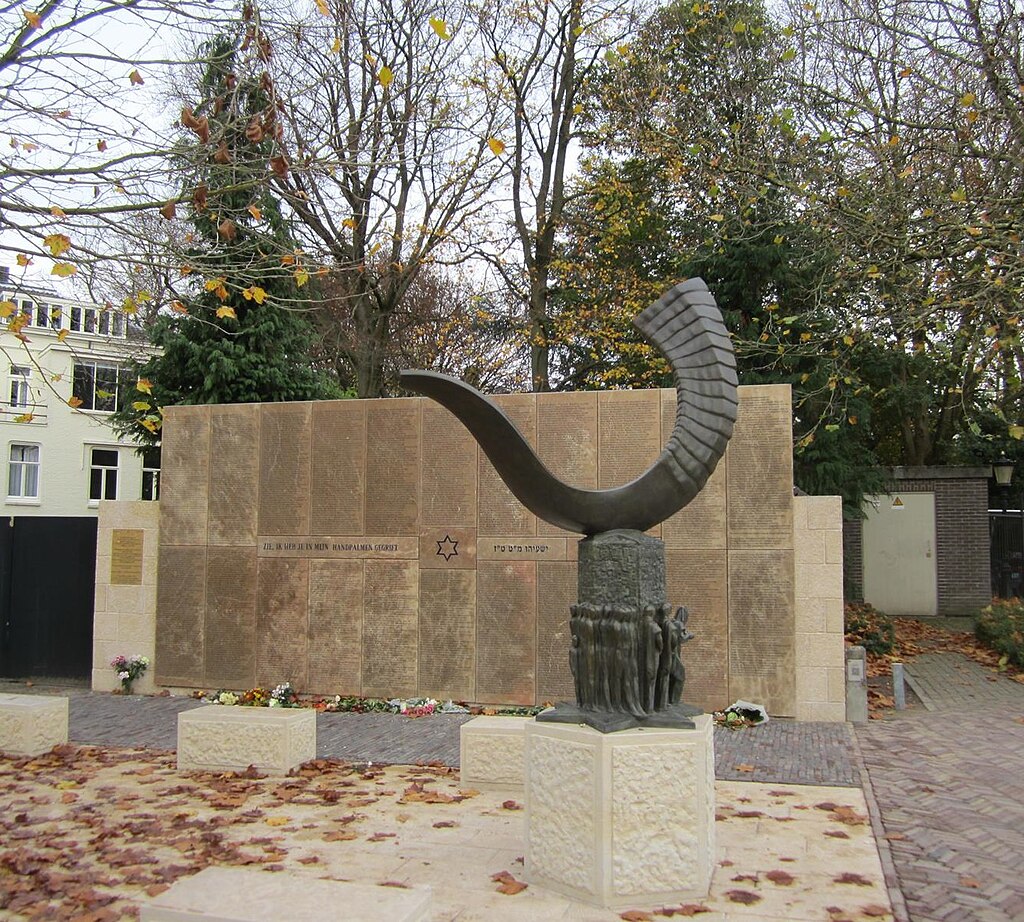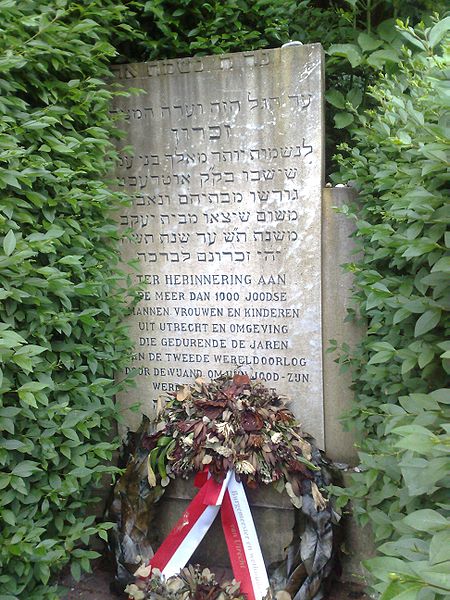
Jews have lived in Utrecht on and off and under varying circumstances since the 14th century. During the 15th century, Jews lived in the center of the city in a street that is still called Jodenrijtje (Jew’s Row), located in a courtyard behind the Bakkerstraat. In 1546, King Charles V banned Jews from residing within the entire bishopric of Utrecht. Therefore, the first Jew to obtain citizenship in Utrecht did so at the beginning of the 18th century.

In the 18th century, Jews visiting Utrecht for the annual fair gathered for prayer at De Hollandse Tuyn, a rooming house located in the Boterstraat. Synagogue services were arranged by the Reis Chewre, a religious traveler’s aid society organized by the Jews of Utrecht. During the closing decades of the 18th century, the Jewish population of Utrecht had grown to such an extent that in 1792 a former Mennonite church located in the Jufferstraat was hired for use as a synagogue. Prior to then, Jews residing in Utrecht prayed in a house on Korte Nieuwstraat. The former church was purchased by the Utrecht community in 1796 and remained in use as a synagogue until 1981. The building was restored four times over the almost two centuries it the served community as a house of prayer.
During the period of Napoleonic rule in the Netherlands, Utrecht was chosen as the seat of the provincial chief rabbinate. In the 1830s, the Utrecht community was divided by a series of conflicts over the banning of Yiddish as a language of prayer in the synagogue.
Until 1807, the Jews of Utrecht buried their dead in a Jewish cemetery near the nearby town of Maarssen. In 1808, the community purchased ground for new cemetery on the Zandpad adjacent to the river Vecht.
In 1821, a new schoolhouse was built for the community’s school for poor Jewish children. The number of children educated at the school rose throughout the course of the 19th century, this despite the ongoing integration of Jewish children into public education following the passage of a country-wide educational reform legislation in 1857.
Sign of the city’s dynamism, local branches of the Society for the Welfare of Israelites in the Netherlands, the Alliance Israélite Universelle, and the Society for the Practice of Jewish Sciences, and the Central Israelite Orphanage opened in Utrecht throughout the 19th century.

The Jewish population of Utrecht grew rapidly over the first decades of the 20th century. As a result, the seat of the provincial chief was returned to Utrecht in 1917. During the same period, new Jewish organizations arose in Utrecht, including Zionist societies, a youth movement, and a sports club. At the time, the majority of the Jews of Utrecht worked as shopkeepers and as peddlers. Other of the city’s Jews worked as wholesale merchants, civil servants, teachers, university professors, and lawyers.
During the early years of the World War II German occupation of the Netherlands, foreign Jews were driven out of the coastal areas of the country. Many came to Utrecht, forming a community of German Jewish refugees. All the Jews of Utrecht were affected by anti-Jewish measures implemented by the Germans and their collaborators. In November 1940, local Jews were fired from the civil service. The mayor of Utrecht was later dismissed because of his reluctance to implement anti-Jewish measures. Jewish children were expelled from Utrecht’s public schools in September 1941. Separate Jewish schools were organized the same autumn. In October 1941, a representative of the German-controlled Jewish Council was appointed in Utrecht.
Deportation of Jews from Utrecht began in September 1942. Even during the period of deportations, Jewish life in Utrecht remained active, both on the cultural and the religious fronts. The last Jew known to the authorities to remain in Utrecht was deported to the detention camp at Vught in April, 1943. Several hundred other Jews remained behind in hiding, helped in part by resistance groups in Utrecht including the Kindercomité. Other Jews found hiding places in the nearby towns and villages of Zeist, Maartensdijk, and Loosdrecht.
In 1941, an attempt was made to burn down the Utrecht synagogue but failed. The synagogue was sealed following the deportation of the last Jew apprehended in the city. The building came through the war undamaged and was reopened on May 10, 1945 just after the liberation of Utrecht. A number of the synagogue’s Torah scrolls and ceremonial objects had been hidden during the war and were later recovered.
Jewish life continued in Utrecht during the postwar period. A monument to the more than 1,000 Jews of Utrecht murdered during the war was erected at the Jewish cemetery in 1948. Today, another memorial can be visited in fond of the Railway Museum.
By 1981, the synagogue in the Springweg had become too large for the dwindling Utrecht community and was sold. In the time since, weekly religious services have been held in a smaller locale furnished with the Holy Ark of the former Ashkenazi synagogue at Maarssen (founded in 1776). The Jewish community at Utrecht celebrated its 200th anniversary in 1989.

The Jewish cemetery was restored in 1990. In 2004, volunteers from the Foundation for Penance and Reconciliation assisted in the restoration of 200 gravestones at the cemetery.
A liberal Jewish community was established in Utrecht in 1993. The offices and synagogue of the Liberal community are located in the building of the former Central Israelite Orphanage on the Nieuwegracht. In 1994, the mayor of Utrecht unveiled in the building a plaque commemorating the former orphanage. The city is also home to an Orthodox community and a Lubavich beit habad.
Every year in the spring are held the Jewish Heritage Days of Utrecht where you can visit with a guide the houses where lived the most prominent members of the community.